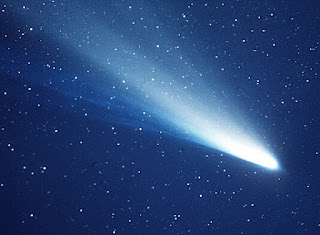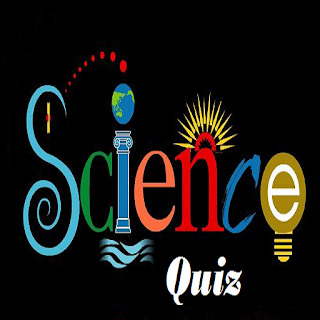COMETS: THE TRAVELLERS AND MESSENGERS OF SPACE
COMETS: THE TRAVELLERS AND MESSENGERS OF SPACE
Nikunja Bihari Sahu
Tucked away in the far fringes of our Solar System and beyond the orbit of Pluto, stretches out into interstellar space a great void world. Known as the Oort cloud, this is a rather quiet eventless place at the edge of our Solar System. From here, a bright yellow star, the Sun, can easily be seen. The Sun never appears to be the brightest amongst all the stars seen from this eerie and uncanny place. Rather, stars like Sirius and Canopus appear to be brighter. Attached to the weak gravity of the Sun, exists a band of space rocks since several million years that slowly go around the Sun in their quite desolate world at no more than an aircraft’s speed.
Due to the irregular motion
of the stars around the centre of our Milkyway galaxy, occasionally some stars
come closer to these rocks and tug them a little with their gravity. This force
is sufficient for some of these bodies to slip away from their destined orbits.
Out of these, some travel towards interstellar space never to be seen
again. But the paths of a few are quite interesting! They head toward the Sun and
eventually came to be known as Comets. However, at this point of time, the Comet
is simply known by a chunk of ice that basically forms its Nucleus.
As the Comet nears the Sun, the solar
heat vaporizes the material from its surface. Tiny ice crystals that make up
most of its surface stuff become unstable and burst into violent jets of gases.
As the Comet approaches further and its darkened surface is flashed with bright
sunlight, hundreds of jets shoot up into all directions of the sky. The Nucleus
is now surrounded by a bright envelope of gas and dust. This is the atmosphere
of the Comet and is its second appendage known as the Coma. A typical Coma may extend
up to tens of thousands of kilometers in diameter. Now the Comet has moved very
close to the Sun. The dust particles that form the Coma are blown away by the
strong ‘Radiation Pressure’ of the Sun giving rise to a curved Dust tail. This
is the third and most conspicuous structure of the Comet. Seen as a long and bizarre
trail of light in the night sky, it may actually extend up to several million
kilometers in space. Now, it appears that there is not just one tail: a
straight hazy tail is also visible. This is the Gas tail consisting of ions that
absorb Ultraviolet radiations from the Sun to reflect visible light to be seen
by us.
Now, the Comet has become a spectacular sight in the sky. Its strange shape attracts everybody’s attention. The Comet has come a long way from its remote home to become visible. It generally grips people with fear and panic and is associated with beliefs like doom, disaster, bloodshed and death of princes. Eventually, the Comet turns away from the Sun in its elliptical orbit and the materials that formed its tail are swept away and lost into space. Its violent processes quickly subside in the frigid interstellar conditions and the Comet sheds most of its appendages. Finally, it returns to its quiet icy home beyond the limits of the Solar System.
Periodic Comets used to visit our sky at regular
intervals of time to be seen again and again. Halley’s comet, a well-known short-period comet with a period of 76 years, belongs to this category. Long-period
comets can have periods ranging up to several hundred years. Amongst the
spectacular comets seen in the recent past are the Comets West (1976), Bennet
(1970), Ikeya-Seki (1965), Hyakutake (1996) and Hale-Bopp (1997). This author remembers
with nostalgia to have personally seen two remarkable Comets of the recent past
i.e. Hyakutake and Hale-Bopp with his own eyes. While the former became
incredibly brighter within a very short span of time (because of its very close
passage to the Sun) and suddenly vanished into oblivion after a brisk momentous
appearance, the latter stayed in the sky for weeks. However, it didn’t become
very bright of the rank of a great Comet (as it never approached very close to
the Sun) as speculated by astronomers due to its unusually large Nucleus
that gave off a great deal of dust and gas. Halley's Comet is likely the most
famous comet in history that becomes visible to the naked eye every 76 years as it nears the sun. When Halley's
Comet zoomed near our Earth during its last appearance in 1986, five spacecraft
flew past it coming close enough to take photographs of its Nucleus (which
is normally concealed by the Comet's Coma) and gathered unprecedented details.
The collision of a Comet with our planet may result in a major catastrophe that can eventually end life on Earth. The mass extinction of dinosaurs 65 million years ago is traced back to one of such impacts. A burning example of a Comet hitting a planet in the recent past is the comet Shoemaker-Levy which crashed spectacularly with Jupiter in 1994. The giant planet’s strong gravitational pull ripped the comet apart into a larger number of fragments that caused at least 21 visible impacts. The most violent impact created an enormous fireball that rose 3000 km above the planet’s cloud tops and a giant dark spot more than 12,000 km across( about the size of the Earth) was also seen. The blast was estimated to have an energy output equivalent to 6000 giga-tons of TNT explosive. When our Earth, in its annual journey around the Sun, crosses the path of a Comet, leftover dust and ice particles left by the Comet can create increased numbers of meteors to rain into our atmosphere which is commonly known as the meteor shower.
Comets
also prove to be boons for mankind as well. Life on the Earth is believed
to have been transferred from a Comet in the distant past during one such collision
with our planet. Also, due to their very low temperature, the Comets preserve most
of the materials that formed our early Solar System, and hence, they serve as messengers from space for astronomers to look into the evolutionary process
of our early Solar System. Comets are indeed the Travellers and Messengers of
space!
Education Officer Regional Science Centre Bhopal Phone: 8018708858




Comments
Post a Comment